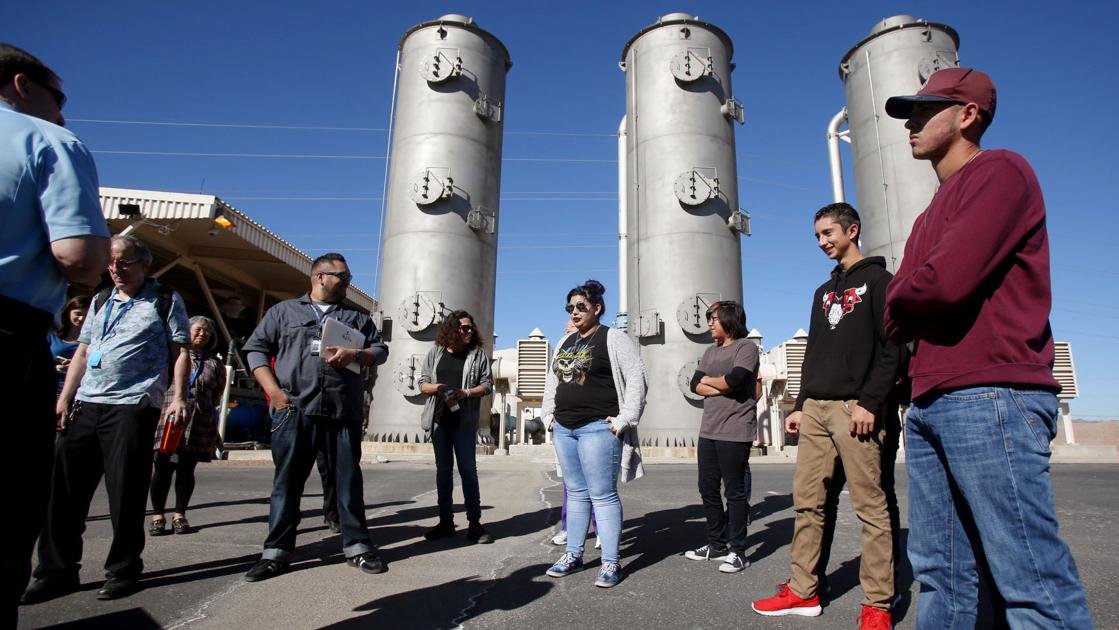Tech
Tucson Water Declares Old South Side Treatment Plant Redundant

Tucson Water officials are planning to shut down a 22-year-old treatment plant, deeming it unnecessary due to advancements in water treatment technology. The newer facility, established in 2014, effectively removes contaminants, including the recently classified carcinogen 1,4-dioxane, leaving the older plant deemed redundant.
“It’s redundant now and it’s costing money unnecessarily,” stated Jeff Biggs, Tucson Water’s administrator of strategic initiatives. Contamination in the area has affected the largely Hispanic south-side community since the 1950s, stemming from the use and disposal of trichloroethylene (TCE) as an industrial degreaser.
For nearly three decades, residents unwittingly consumed and bathed in water tainted with toxic chemicals. Long-term exposure to TCE has been linked to severe health issues, including kidney and liver cancers. A treatment facility funded by responsible industries began operation in 1994 at the Tucson International Airport Area Superfund Site, which houses a significant contaminated groundwater plume.
Over 22 years, the plant has removed 5,303 pounds of TCE, yet estimates suggest it may take another 30 years to eliminate TCE entirely, according to Chad LaPora, environmental and regulatory compliance supervisor for Tucson Water. While the original treatment method was effective against TCE, it did not filter out 1,4-dioxane, which recently received heightened scrutiny due to its dangers.
A recent public forum conducted by the EPA proposed amendments to cleanup plans that would allow for the closure of the older facility. The public has until April 21 to comment on these proposed changes. Many residents, however, remain skeptical about the safety of the treated water.
At the forum, concerns about health issues, including cancers and autoimmune diseases, were raised. Some community members are demanding studies to investigate any links to contamination. EPA toxicologist Gerry Hiatt emphasized that while the agency conducts health-risk assessments, it lacks the resources to perform community health evaluations.
South-side resident Linda Robles, along with Tucson toxicologist Dr. Farshad Shirazi, is spearheading a survey within the community to gauge the extent of illnesses linked to water contamination. “They just keep finding more chemicals,” Robles remarked, expressing concern over the source of these contaminants.
Further complicating the situation, Tucson Water is monitoring chromium-6 levels, a carcinogen that has drawn attention since the release of the film “Erin Brockovich.” In November, chromium-6 was detected at levels deemed safe, but this standard may be called into question depending on forthcoming EPA assessments.
Tucsonan Yolanda Herrera, 64, has witnessed the water cleanup efforts from the beginning and supports ongoing conversation about health awareness. She stresses the need for continued community involvement in environmental discussions, especially with the aging advisory board.
In an effort to engage younger generations, Kristin Gunckel, a professor at the University of Arizona, has developed a curriculum focusing on the groundwater contamination at the Superfund site. High school students have shown increased interest in the issue through educational initiatives and field tours. “We need the younger generation to hold government agencies accountable,” Herrera added, emphasizing the importance of youth involvement.
Michelle Jaquette is a University of Arizona journalism student and an apprentice at the Star.

















